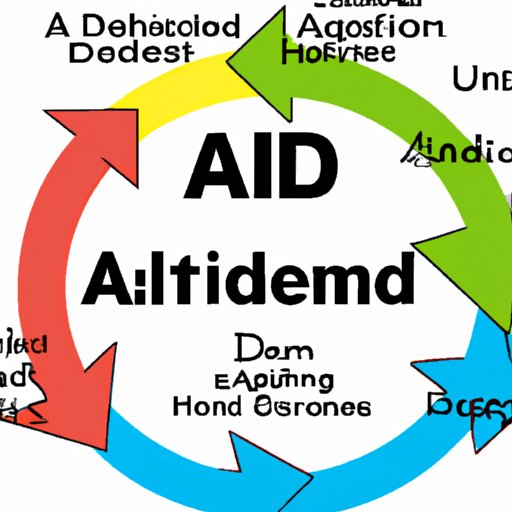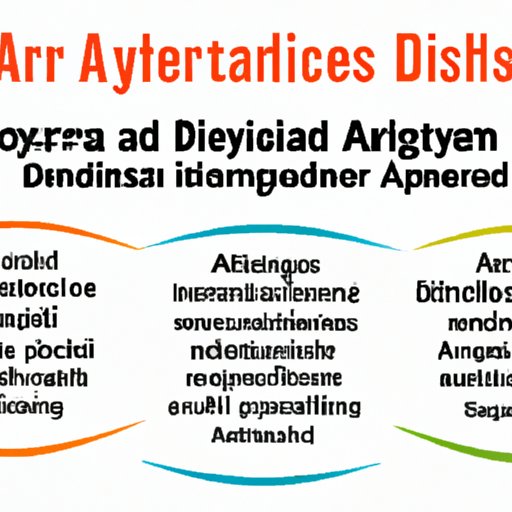
Introduction
Attention Deficit Disorder (ADD), also known as Attention Deficit Hyperactivity Disorder (ADHD), affects millions of people of all ages. It is a neurodevelopmental disorder characterized by a persistent pattern of inattention, hyperactivity-impulsivity, or both. Symptoms can range from difficulty focusing to forgetfulness, impulsive behavior, and difficulty with executive functioning.
In this article, we will cover 10 different symptoms of ADD and offer practical tips for managing them. We’ll also discuss warning signs of ADD in children and adults, the link between ADHD symptoms and executive functioning, and the role of neuropsychological tests in assessing ADD symptoms. Whether you are personally affected or know someone who is, this guide will provide helpful information to better understand and manage ADD symptoms.
10 Common Symptoms of ADD and How to Manage Them
Add symptoms can vary greatly from person to person, but there are some common signs to look out for. Here are ten of them and some practical tips for managing each:
1. Difficulty Focusing
People with ADD often struggle to focus on one task for an extended period. Try breaking down tasks into smaller steps and setting a timer for each step. Use tools such as noise-cancelling headphones or even white noise to create a quiet, distraction-free environment.
2. Forgetfulness
Memory issues can be especially challenging for those with ADD. Try using sticky notes and to-do lists to help stay organized. You can also use color-coding or other visual aids to help remember important information.
3. Impulsive Behavior
Those with ADD often act impulsively without considering the consequences. Practicing mindfulness exercises such as deep breathing or meditation can help manage impulsive behavior. You may also find it helpful to think through your decisions and ask yourself if it aligns with your values and goals before acting.
4. Hyperactivity
Hyperactivity is a hallmark symptom in children with ADD. Incorporating regular exercise or physical activity can help manage hyperactivity. You may also find that fidget toys or other tools to keep your hands busy can help reduce restlessness.
5. Trouble Starting Tasks
People with ADD may struggle to get started on tasks, particularly those that are boring or not immediately rewarding. Try breaking down the task into smaller, more manageable steps. Set realistic goals and give yourself breaks as necessary.
6. Time Management Issues
Time management can be a significant challenge for those with ADD. Use a calendar or planner to schedule appointments and deadlines. Break tasks into smaller, more manageable steps, and set a timer for each step. Consider delegating tasks to others when appropriate.
7. Restlessness
Restlessness often accompanies ADD symptoms. Regular exercise can help manage restlessness. You may also find it helpful to take short breaks throughout the day to stretch or move your body.
8. Organization Difficulties
Those with ADD may struggle to stay organized. Develop a routine and stick to it. Use organizational tools such as filing cabinets or labeled storage containers. Consider setting aside time each day to tidy up your work or living space.
9. Poor Listening Skills
Listening skills can be challenging for those with ADD. If you find your mind wandering during conversations, try practicing active listening techniques such as repeating back what the person said or asking clarifying questions.
10. Difficulty with Transitions
Transitions, such as switching from one task to another, can be difficult for those with ADD. You may find it helpful to use a timer or countdown to signal when it is time to switch tasks. Take a moment to refocus before moving to the next task.
Understanding the Warning Signs of ADD: A Guide for Parents and Adults
ADD can manifest differently in children and adults, so it is important to understand warning signs for each group.
Children
Children with ADD may show signs such as falling behind in school, trouble staying organized, acting impulsively, or interrupting others often. If you suspect your child may have ADD, it is essential to talk to a pediatrician or healthcare provider. They can refer you to a specialist for a full evaluation. Early intervention can be crucial in managing ADD symptoms in young children.
Adults
Adults with ADD may go undiagnosed, as symptoms can be masked by other responsibilities, such as work or family obligations. Symptoms may include difficulty with time management, struggling to complete tasks, forgetfulness, and chronic lateness. Seek out support groups or work with a therapist to manage ADD symptoms as an adult. It is never too late to seek professional help and begin managing ADD symptoms.
The Link Between ADHD Symptoms and Executive Functioning
Executive functioning refers to various cognitive skills, including planning, organization, decision-making, and time management. Those with ADD may struggle with executive functioning, making the symptoms of ADD more challenging to manage. Here are some strategies for improving executive functioning and managing ADD symptoms:
1. Breaking Down Tasks into Smaller Steps
Separating larger tasks into smaller, more manageable steps can make them feel less overwhelming. Use visual aids such as a checklist or mind map to help break down tasks efficiently.
2. Using Timers
Setting a timer can help you focus on a single task for a specific amount of time. Use a timer for each step to help manage time effectively.
3. Using Visual Aids
Visual aids such as calendars, to-do lists, and reminders can help improve memory and organization. Use color-coding or other visual cues to help remember important information.
4. Self-Care
Taking care of your physical and mental health can help manage ADD symptoms. Regular exercise, a healthy diet, and good sleep hygiene can all help reduce symptoms of ADD.

From Hyperactivity to Inattention: A Comprehensive Look at ADD Symptoms
There are different types of ADD, and the symptoms can manifest differently. Here’s a closer look at each type of ADD:
1. Hyperactive-Impulsive Type
This type of ADD is characterized by hyperactivity and impulsivity. Symptoms may include fidgeting, interrupting others, and difficulty waiting their turn. Managing symptoms may include incorporating regular exercise, using fidget toys, and taking breaks as needed.
2. Inattentive Type
This type of ADD is characterized by inattention and forgetfulness. Symptoms may include difficulty staying focused for extended periods, missing details, and forgetfulness. Managing symptoms may include breaking tasks down into smaller steps, using visual aids, and developing a structured routine.
How to Recognize Symptoms of ADD in Your Child’s Early Years
Early intervention can be crucial for managing ADD symptoms in young children. Here are some signs to look out for:
1. Difficulty Sitting Still
Young children with ADD may struggle to sit still for extended periods. They may squirm in their seats or fidget frequently.
2. Trouble Following Instructions
Difficulty following instructions may be an early sign of ADD. Children may have trouble comprehending complex directions or completing multi-step tasks.
3. Becoming Easily Distracted
Young children with ADD may have difficulty paying attention to a single task for an extended period. They may become easily distracted by noises or visual stimuli.
ADD in Adults: What to Look Out for and Strategies for Coping
ADD can go undiagnosed in adults, so it is essential to know what to look out for. Here are some symptoms and strategies for managing them:
Symptoms
Adults with ADD may struggle with time management, forgetfulness, and chronic lateness. They may have difficulty completing tasks and staying organized. It is essential to seek out a professional diagnosis if you suspect you may have ADD.
Strategies for Coping
To manage ADD as an adult, seek support from a therapist or support group. Consider using tools such as timers or organizational aids to manage time effectively. Establish routines and stick to them. Take breaks as necessary to avoid becoming overwhelmed.
The Role of Neuropsychological Tests in Assessing ADD Symptoms
Neuropsychological tests can help diagnose ADD and evaluate cognitive function and executive functioning. If you are preparing for a neuropsychological test, here are some tips:
1. Get Plenty of Rest
Make sure to get a full night’s sleep before the test. Adequate rest is essential for cognitive function and will help ensure accurate results.
2. Follow Instructions Carefully
Listen carefully to the instructions and ask questions if anything is unclear. Make sure you understand each task before beginning.
3. Stay Focused
Stay focused on each task and resist the impulse to move on to the next question before completing the current one. Use the tools provided, such as pencils and paper, to help stay organized.
Conclusion
ADD can be challenging to manage, but with the right strategies and support, it is possible to live a fulfilling life. Whether you are personally affected or know someone who is, seeking professional help and taking steps to manage ADD symptoms is essential. By understanding the warning signs, improving executive functioning, and developing routines to stay organized, it is possible to live well with ADD.




